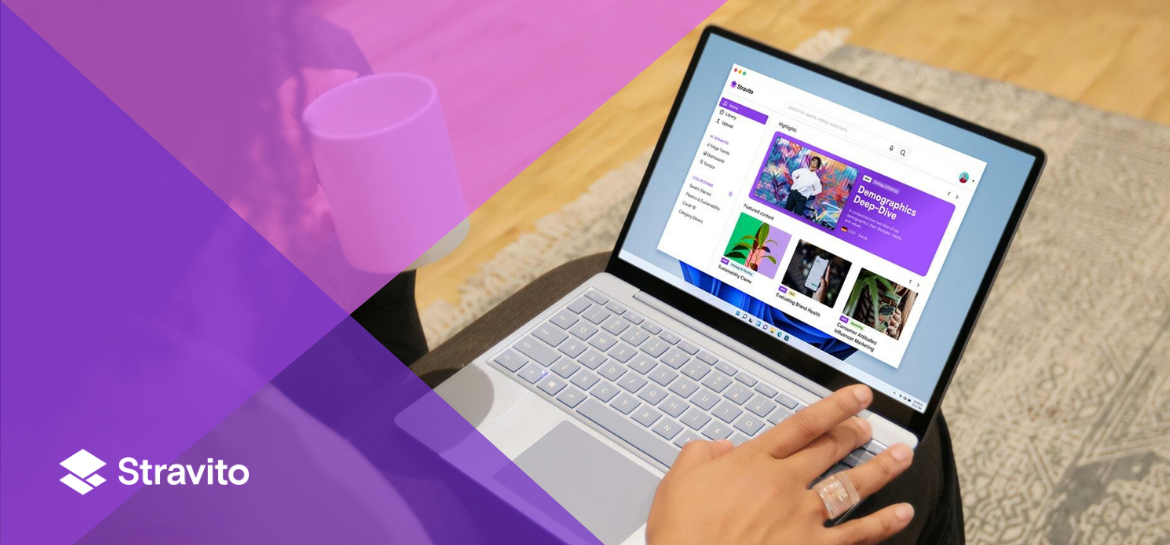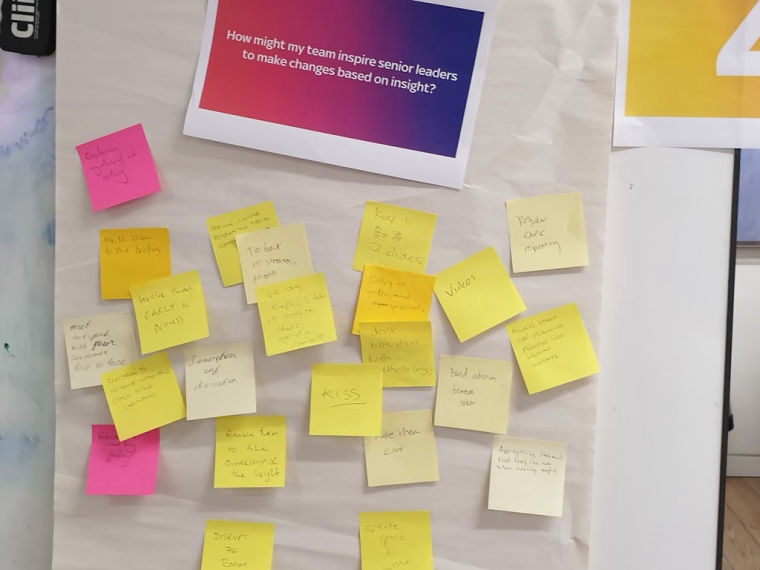Unlocking innovation
3 Steps toward insights democratisation

Innovation is challenging, and there are various factors that contribute to its success or failure. But one underlying aspect that often impacts others is the culture around access to knowledge and insights.
The connection between insights democratisation and innovation
Organisations that have a purposeful knowledge sharing culture are better poised to leverage market and consumer insights and collaborate in ways that foster innovation.
At one extreme, a siloed organisation with various bottlenecks and potentially even a culture of information hoarding will likely experience communication breakdowns that lead to duplicate efforts and flawed decision-making.
At the other extreme, an organisation that shares too much information without a clear strategy creates a climate of overwhelm, where no one knows what insights to pay attention to.
Both extremes can slow project timelines, increase costs, create unnecessary stress, and ultimately hamper innovation.
But when insights are shared purposefully, frequently, and broadly, you create a context where innovation can thrive.
This might manifest as making it easier for insights teams and stakeholders to build on each other's ideas, see problems or opportunities from different perspectives, or identify research gaps not previously visible. And when insights sharing occurs across teams with different experiences, expertise or backgrounds, the effect is multiplied.
Sharing, however, is only one element of insights democratisation.
Democratising insights is about empowering stakeholders to access, process, and apply insights in a way that can be sustained over the long term.
Of course, like many noble ambitions, it’s far easier said than done.
How to democratise insights
So how do you democratise insights across your organisation? Below are 3 concrete actions that we’ve seen help our clients.
1. Provide secure self-service to insights
A fantastic way to empower your stakeholders is to ensure they can easily access insights on their own. Whether they encounter a new business question or are looking for inspiration, they ought to have a direct line to business-critical information themselves, in particular, if it concerns a key topic or trend for the organisation.
Many times, a question will naturally require expert knowledge from an Insights team. Whether that is to explain nuances of a particular finding or to see how particular research findings can be applied to a new setting, it’s important that the Insights team themselves also have a fast and efficient way to access all the information needed to support the organisation.
When access to information is increased, the number of low-value requests to Insights teams such as “Where do I find report X?” are reduced. Stakeholders have faster access to relevant information to apply to business decisions, and Insight managers have more bandwidth to collaborate with the organisation as a strategic business partner instead of Insight air traffic controllers.
2. Reimagine insights sharing
Access to insights is a key piece of the puzzle, but without the right packaging and delivery, said insights are likely to go the way of the dinosaurs. Because just because access is available doesn’t necessarily mean that they will be taken up and used.
So how those insights are shared are a key piece of the puzzle:
At its core, the democratisation of insights is a form of organisational learning. And learning doesn’t happen without repetition and a steady flow of new knowledge. One-off questions from stakeholders are simply not enough to ensure new insights are being adopted across the organisation.
It’s also crucial that key information, like conclusions or sample demographics, can easily be found and understood. Else, your precious research findings could be misused or misconstrued.
The timing of delivery is another important aspect: By embracing asynchronous communication and collaboration, you let your team members and stakeholders soak up new information and knowledge in a time that suits them.
3. Use supportive technology to reduce friction
Similar to most organization-wide initiatives, the road to insights democratisation is fraught with potential obstacles. Getting organisational buy-in, securing appropriate budgets and resources, and navigating ever-evolving organisational priorities are no easy feats.
That’s why it’s crucial to reduce the amount of additional work created by your insights democratisation initiative. Packed calendars and ever-expanding to-do lists mean it’s a good idea to opt for a solution that minimises the workload related to system implementation and ongoing maintenance.
Curious about how to choose the right tech for your org? Check out our Enterprise Buyer’s Guide
The right technology to help you democratise your insights allows you to control for certain predictable challenges.
A purpose-built insights platform with capabilities such as AI-powered search, a user-friendly design and best practices for implementation will make a world of difference in this endeavour. Of course, the most benefits are reaped when all 3 of these factors are present, and the solution set-up is tailored to your organisation.
Bottom Line: You’re 3 steps away from Insights Democratization
In recent years, the ambition of creating a culture of insights democratisation has been all the rage in customer-obsessed companies. But while most of us see clear reasons for “Why”, there has been much less focus on “How”. Employing the strategies recommended in this article will get you started on your way towards democratising insights across your company.
Simplify insights democratisation with our free Enterprise Knowledge Management Buyer’s Guide
Thor Olof Philogène
CEO and Co-Founder at StravitoThor Olof Philogène is the CEO and Co-founder of Stravito, an AI-powered knowledge management platform for market research. Stravito allows global organisations to centralise their insights and make them accessible to employees everywhere, with minimal time and effort. Founded in 2017, Thor leads the Stravito team, counting world-leading enterprises such as Comcast, Electrolux and Danone as customers. Prior to Stravito, Thor held many prominent leadership positions. Most recently, he was Chief Revenue Officer at fintech company iZettle, which has since been acquired by PayPal. Here, Thor scaled the growth division from scratch to a 200-strong team covering 12 markets globally. Thor holds an M.Sc. in Business Administration from Stockholm School of Economics.


